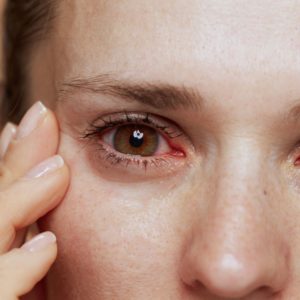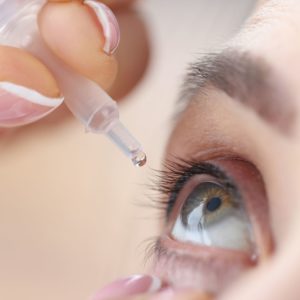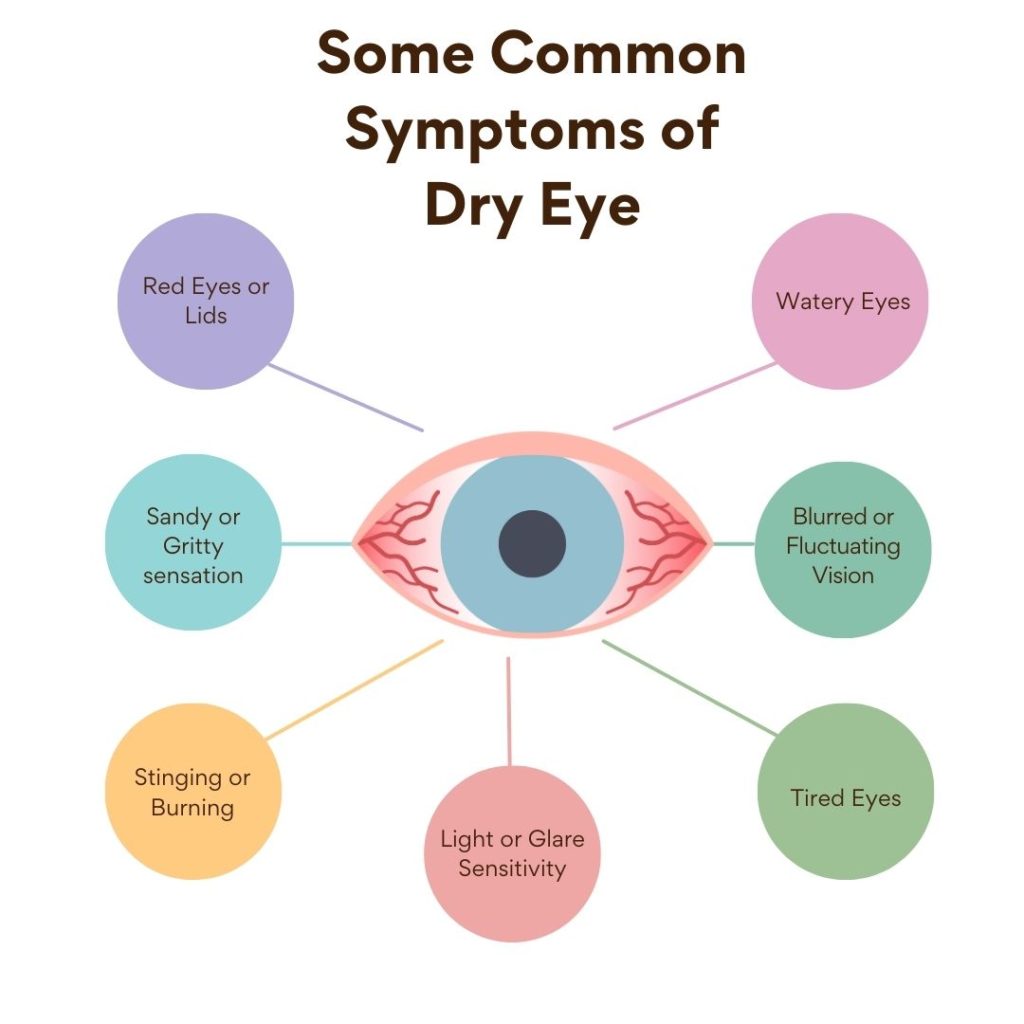Dry eye is a common eye condition, especially in arid Southern Alberta. Dry eye is caused by the lack of or poor-quality tears. Symptoms vary from person to person and can change over time. Here are some of the most common dry eye symptoms:
- Watery eyes
- Stinging/burning
- Sandy/gritty/fb sensation
- Episodes of blurred/fluctuating vision
- Red eyes/lids
- Tired eyes
- Photophobia/glare sensitivity
Dry eyes don’t always feel “dry”!

What causes the symptoms of dry eye disease?
A disruption or imbalance in the tear film is the main cause of dry eye symptoms. There are 3 layers in the tear film: the oily (outermost layer), the watery (middle layer) and the innermost mucous layer. These layers are not completely distinct and work together. The oily/lipid layer prevents evaporation of the tears on the eye’s surface. The watery/aqueous layer provides hydration. While the mucous/mucin layer helps bond and spread the tears evenly. Symptoms can result from disruption in one or more of these layers. Certain medications, surgery, dry environment, aging, and some medical conditions can all exacerbate dry eye and its symptoms.
- Watery eyes (Epiphora)
When the eyes water in response to dryness, it is often reflexive tearing. The lacrimal gland produces more tears to try to help combat the dryness. The trigger is often the oily layer of the tear film evaporating on the surface of the eye. This is common in lipid-deficient dry eye. It can be made worse in cold wind and when reading or on screens for prolonged periods of time.
- Stinging/burning sensation
A stinging or feeling of irritation on the surface of the eye is quite common in people with dry eyes. This can be related to tear evaporation and/or damage to the cells on the eye’s surface. It is also common if you have dry eye related to ocular rosacea or Sjogren’s syndrome. The evaporation and damage will trigger a feeling of pain. Also, if the tissue of the eyeball is elevated from a pinguecula (small yellowish bump on the white of the eye) or pterygium (typically a triangular growth from the white of the eye onto the cornea) it will dry out more quickly. Therefore, patients with these growths often experience more of a burning/stinging sensation.
- Sandy/Gritty/Foreign Body Sensation
The feeling of something being in your eye (foreign body sensation) or that the eyes feel gritty is often a sign of dry eye. It can be caused by the lack of tears and/or tear film evaporation. It is quite common if you also suffer from blepharitis (lid inflammation)- the lids can get a buildup of debris/crusting which can fall into the eye. The lids are often itchy and red with blepharitis.
- Episodes of blurred or fluctuating vision
Intermittent blur occurs in dry eye, especially when the tear film is not stable and does not form an even layer. The places where the tear layer is unstable can cause blur and those areas are more likely to lead to cell damage on the surface of the eye. The blur is often worse when reading or on screens when the blink rate tends to slow down. Patients will often say that blinking the eyes helps clear the vision up.

- Red eyes or eye lids
The lids are often red if you suffer from blepharitis. The redness is due to the inflammation present in the lids- this can be caused by debris build up, overgrowth of the natural bacteria on the lids and blockage in the oil glands in the eyelid. Dry eye is an inflammatory disease. Redness is one of the signs of inflammation and is due to blood vessel dilation. The reddest part of the eyeball is typically where the eyeball is the driest.
- Tired/strained eyes- asthenopia
Dry eyes tend to be more fatigued. Patients will often have other dry eye symptoms such as burning, irritation and occasional blur. It can be made worse by staring at screens or near tasks for extended periods. Other reasons for eye strain such as trouble focusing on screens, can exacerbate dry eye and vice versa.
- Light or glare sensitivity (photophobia)
The cornea at the front of the eye is highly innervated and if it has dry patches, it can not only be sore but can also contribute to light sensitivity. This symptom is more common in more chronic dry eye. Glare can be caused by a disruption in the tear film or damage to the surface of the eye causing light scatter.

Many of these symptoms are not unique to dry eye disease and thus an appointment with an optometrist is recommended. If any of these symptoms are sudden, the eyes should be checked more urgently. Many factors are considered during an exam. Evaluation of the eyes with a biomicroscope is important in diagnosing dry eye disease. The courses of treatment can be tailored to the symptoms and type of dry eye you are experiencing.
Book an exam today! Visit Type (opto.com)
For more information
Dry Eye Treatment | Calgary | Trinity Hills Eyecare
Dry Eye (Ocular Surface Disease) | The Canadian Association of Optometrists
How to Avoid Dry Eyes | The Canadian Association of Optometrists




